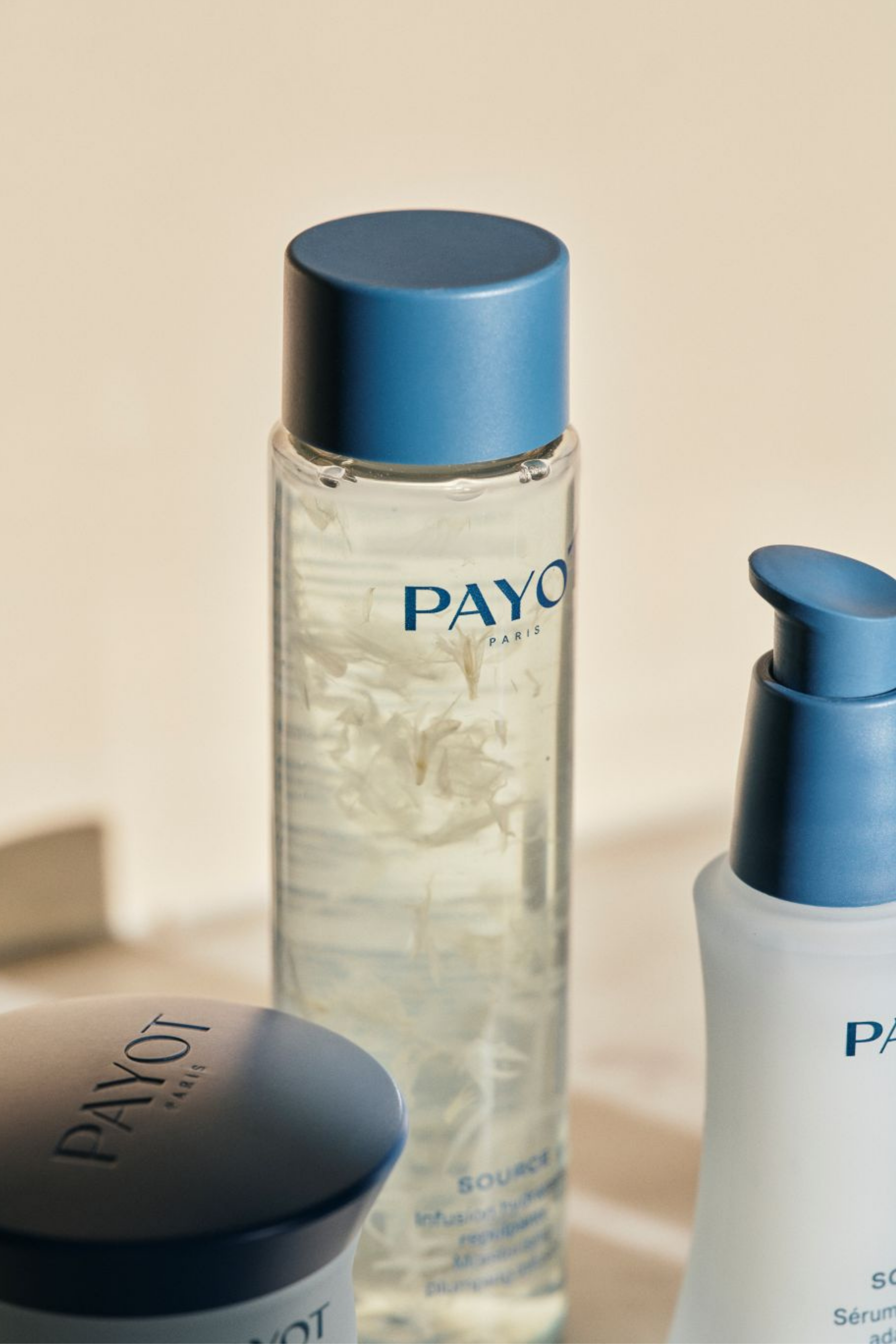Just like nature, skin moves with the seasons and constantly attempts to adapt to its environment. When its protective barrier is overstretched, the skin becomes more permeable and dehydrated. To maintain optimal hydration levels, it must be resilient, and plants could well be a prime source of inspiration thanks to biomimicry.
Skin hydration: a constant adaptation effort
Subjected to all types of external aggressions and under heavy stress, the skin makes a constant effort to acclimatize to maintain proper functioning and preserve its water balance. This adaptive response to fluctuations in its environment occurs on two levels:
• The cohesion and resistance of its protective barrier which limits the evaporation of the water contained in its internal layers.
• The presence of so-called hygroscopic elements which capture and retain on its surface water coming from its internal and external layers
This defense system is very effective, but when conditions become extreme, it fails and water evaporates from the epidermis. In fact, the hydrolipidic film's role as a shield becomes defective, skin cells are less tightly connected, hygroscopic molecules become scarce, and the skin's hydration level is no longer properly regulated.
Biomimicry in the service of skin hydration
Literally "imitating the living," biomimicry draws inspiration from what exists in nature and applies it to another field. In the cosmetics sector, this new area of innovation involves transferring and adapting to the skin mechanisms already in action, particularly within flora. Indeed, certain plants endure environmental stresses similar to those experienced by the skin, sometimes even to greater extents. To survive sudden changes in temperature, oxidation, exposure to ultraviolet rays, and regular dehydration—to name just a few examples—these plants deploy sophisticated resistance mechanisms that can be replicated to lend a helping hand to the skin.
In short, a biomimetic skincare formula mimics the functioning of natural ecosystems to address a specific skin problem. In the case of skin hydration, cosmetic products can mimic the physiology of certain plants that are particularly robust and resistant to their natural environment; these are called adaptogenic plants.
Focus on adaptogenic plants, models of resilience
The term "adaptogen" was introduced in the late 1940s by Dr. Lazarev. This Soviet researcher was interested in certain plants and roots used for thousands of years in Chinese and Ayurvedic medicine to help the body regain its balance, self-regulate, and adapt to daily emotional and physical impacts. Thus, ginseng, reishi, rhodiola rosea, schisandra chinensis, and ashwagandha were gradually documented in the literature and recognized for their benefits for the skin.
Adaptogenic plants help increase the skin's resistance and endurance in the face of environmental aggressions and climatic variations. They draw their extraordinary powers from the heart of the extreme environment in which they survive. Despite harsh climates, extreme cold, arid soils, and hostile saline environments, these plants manage to adapt, thrive, and maintain their water self-regulation, a true source of life. These plants, used for centuries, are now making their way into our bathrooms and help the body and skin regain their harmony and adjust their response to physical, emotional, and environmental stress when faced with it.
Source and the innovative concept of adaptogenic hydration
Payot now offers an innovative solution for thirsty skin: adaptogenic hydration. This customized 48- to 72-hour hydration treatment provides the skin with humectants and film-forming agents to preserve the skin barrier and maintain its moisture balance. At the same time, it strengthens its ability to adapt to a constantly changing environment. The new Source range uses the superpowers of the reishi mushroom and a Breton marine algae, two adaptogenic plants. Exposed to storms off the Armorican coast, the Breton algae soaks up water like a sponge to survive the movement of the tides, winter and summer. The extremely rare reishi mushroom grows in Chinese mountain forests on the trunks of dried plum trees.
Source products contain up to 99% ingredients of natural origin. Their formula is enriched with hyaluronic acid (except the spray cream), a reference active ingredient naturally present in the skin and essential for its proper hydration function. It leaves a protective veil on the face that limits water evaporation. The rehydrating serum, the moisturizing cream, the moisturizing jelly, the moisturizing spray cream or the Source moisturizing eye stick offer you a unique ultra-sensory experience to hydrate your skin.
An inexhaustible field of exploration, nature is more than ever a source of inspiration and innovation for Payot Laboratories.

